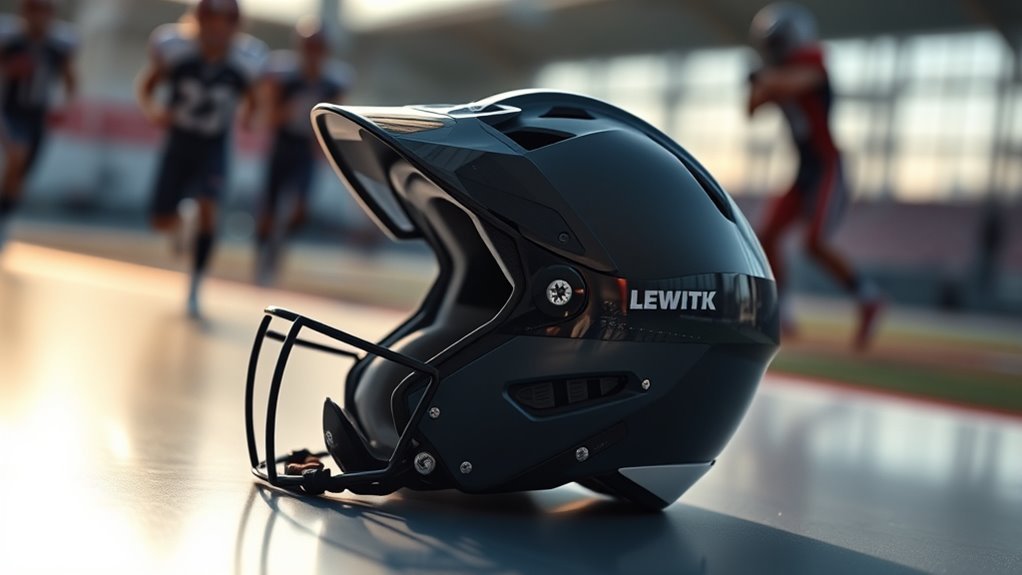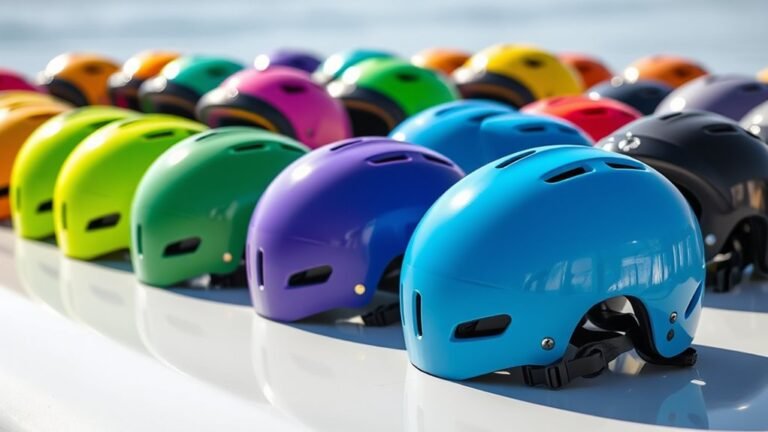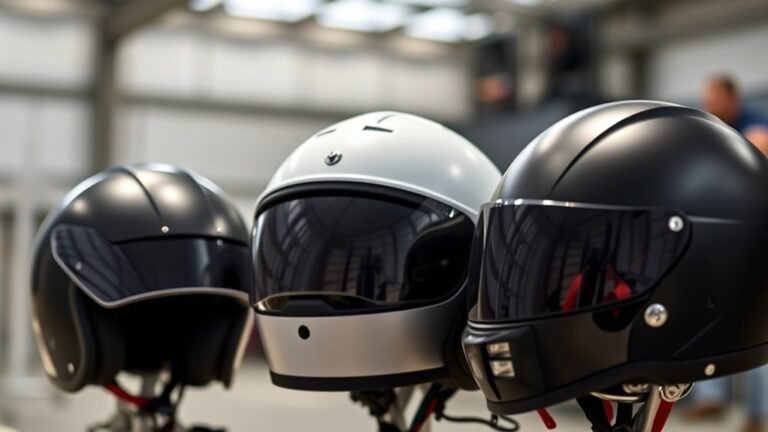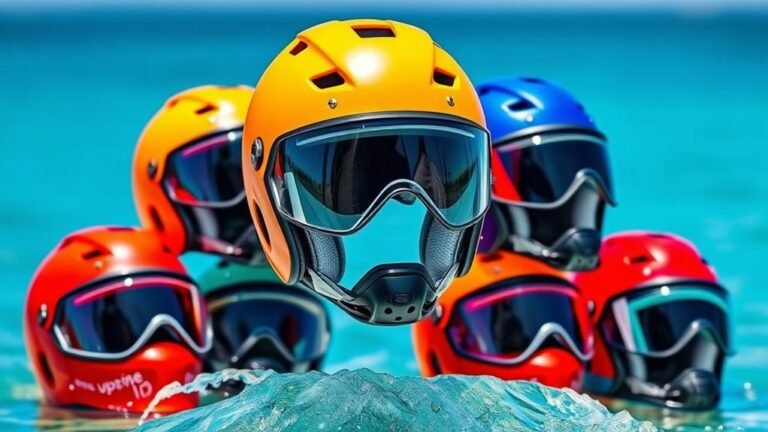Can Helmets Prevent Concussions? The Science
Helmets can help reduce the risk of head injuries, but they can’t fully prevent concussions. Their design can absorb shock, yet they often fall short against rotational forces which are significant in concussion occurrences. Understanding the types of helmets and the materials used is essential. Innovations are being made, but limitations remain. If you want to uncover the full scope of helmet efficacy and better safety practices, there’s more important information to explore.
Understanding Concussions: What Happens to the Brain
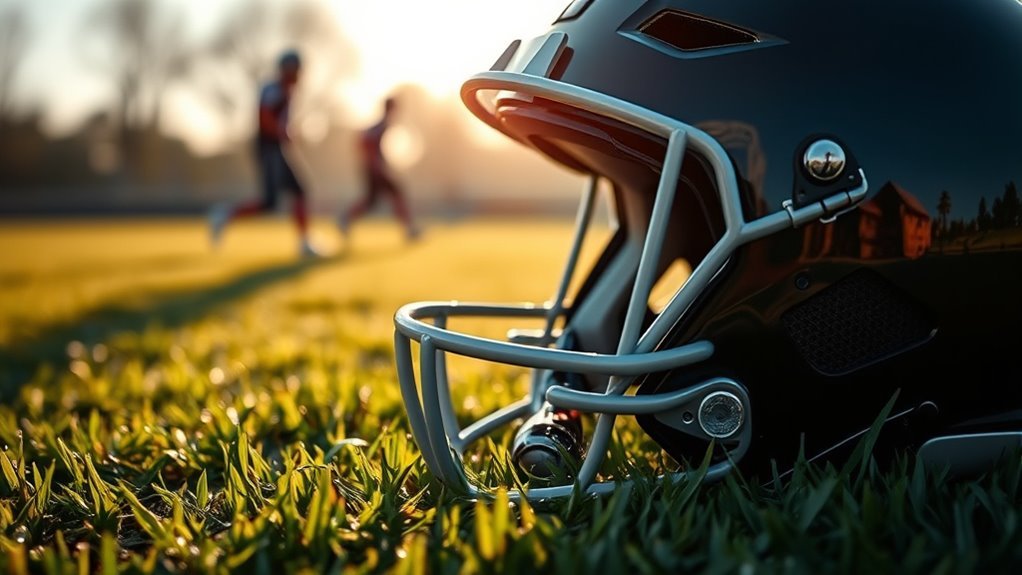
Concussions are complex injuries that greatly impact brain function. When you experience a concussion, the brain undergoes a rapid mechanical movement, which can lead to a brain injury. This injury triggers a cascade of biochemical changes, affecting neural response. Specifically, the disruption of ionic balance alters neurotransmitter release, leading to potential cognitive deficits and physical symptoms. Studies show that these neural disruptions may last longer than the initial impact, resulting in prolonged recovery times. Additionally, the cumulative effects of repeated concussions can exacerbate these issues, raising concerns about long-term neurological health. Understanding how brain injury manifests and the underlying neural response is essential for developing effective prevention and management strategies, ensuring that you can enjoy your activities while minimizing risks.
The Role of Helmets in Injury Prevention
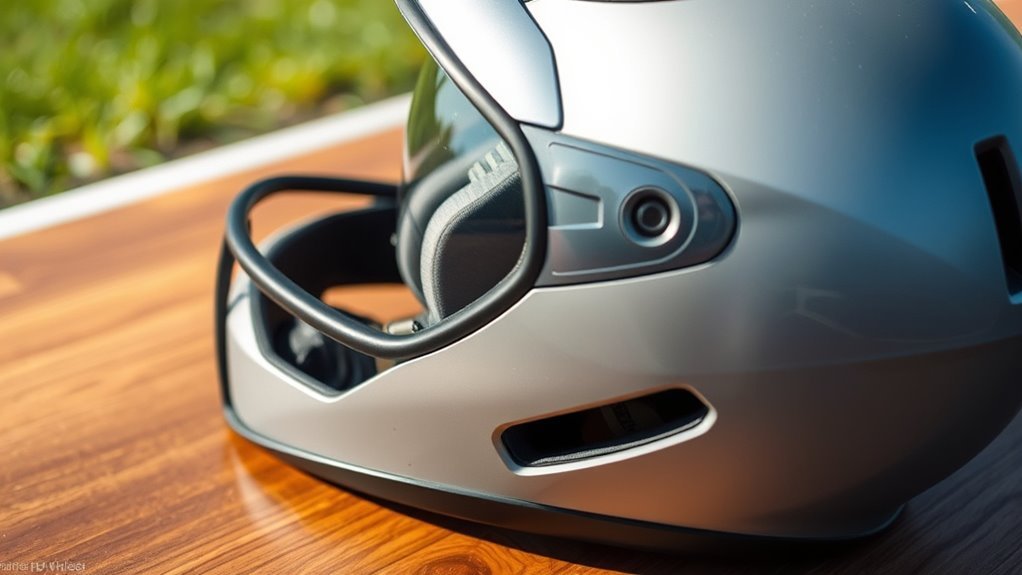
While helmets are often touted as essential safety gear for various sports and activities, their effectiveness in preventing concussions remains a topic of ongoing research and debate. You might wonder about the role helmets play in injury prevention, especially when considering helmet standards and injury statistics.
- Impact Absorption: Helmets are designed to absorb shock, which may reduce the force transmitted to the skull.
- Design Limitations: Current helmet designs may not adequately protect against rotational forces, a significant factor in concussions.
- Regulatory Standards: Adhering to updated helmet standards is vital, but even compliant helmets can’t guarantee full protection against brain injuries.
Understanding these factors can help you make informed decisions about helmet use, but it’s essential to recognize that no helmet can eliminate the risk entirely.
Types of Helmets and Their Design Features
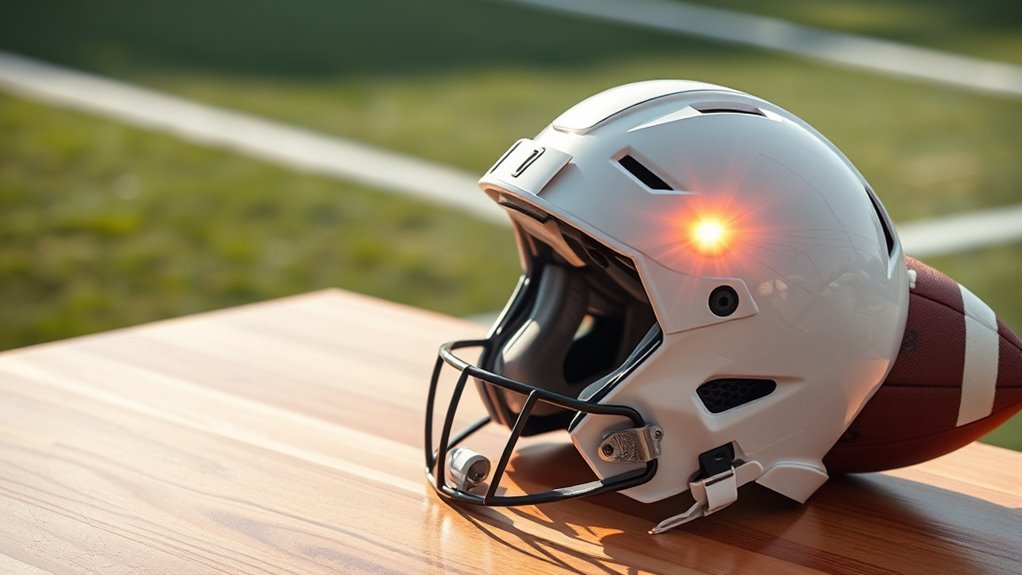
When it comes to the effectiveness of helmets in sports and activities, understanding the various types and their specific design features is essential. Each helmet type is constructed from different helmet materials and adheres to specific safety standards to minimize the risk of head injuries.
| Helmet Type | Key Features | Common Materials |
|---|---|---|
| Bicycle Helmets | Lightweight, aerodynamic design | EPS foam, polycarbonate |
| Football Helmets | Impact-absorbing padding | Polycarbonate, nylon |
| Hockey Helmets | Full-face protection, ventilation | ABS plastic, foam |
| Skateboarding Helmets | Low-profile, increased visibility | Polycarbonate, foam |
| Equestrian Helmets | Reinforced, chin straps | Fiberglass, carbon fiber |
Current Research on Helmet Efficacy
Recent studies are examining how innovations in helmet design can greatly affect impact reduction, potentially lowering the risk of concussions. You’ll find that research focuses on materials and structures engineered to absorb and dissipate energy more effectively during collisions. This ongoing investigation is essential for understanding the true efficacy of helmets in preventing head injuries.
Helmet Design Innovations
As researchers explore deeper into the complexities of concussions, advancements in helmet design have emerged as a critical focus in mitigating head injuries in contact sports. Innovations are leveraging smart materials and adaptive designs to enhance protection. Here are some key developments:
- Smart Materials: These materials can change their properties upon impact, absorbing more energy and reducing forces transmitted to the skull.
- Adaptive Designs: Helmets with adjustable features allow for a better fit, ensuring maximum protection tailored to individual athletes’ head shapes.
- Impact Sensors: Some helmets now include technology that monitors impact force, providing real-time data to assess injury risk.
Impact Reduction Studies
While the debate on helmet efficacy continues, ongoing impact reduction studies are shedding light on how modern designs can effectively minimize concussion risks. Researchers are utilizing advanced impact testing methods to evaluate helmets against evolving safety standards, revealing significant disparities in performance. Recent data indicates that helmets incorporating multi-layer foam systems and energy-absorbing technologies can reduce force transmission to the skull, thereby lowering concussion rates. Additionally, studies emphasize the importance of proper fit and maintenance to optimize these safety features. By understanding the relationship between helmet design and impact dynamics, you can make informed choices that promote safety while maintaining the freedom to engage in high-contact sports. Ultimately, these findings may reshape both helmet manufacturing and consumer expectations.
Limitations of Helmets in Concussion Prevention
While helmets are designed to mitigate impact forces, they have inherent limitations that affect their ability to prevent concussions. You might be surprised to learn that the materials and designs used may not adequately protect against rotational forces, which are often responsible for brain injuries. Additionally, misconceptions about the level of protection helmets provide can lead to overconfidence in their effectiveness.
Impact Force Mitigation
Although helmets are designed to absorb impact forces and reduce the risk of traumatic brain injury, they have significant limitations in preventing concussions. The complexities of impact dynamics can overwhelm the protective capabilities of helmets, leaving you vulnerable in certain situations. Here are key points to take into account:
- Inadequate force absorption: Helmets can only mitigate certain levels of impact; high-velocity collisions may still transmit harmful forces to the brain.
- Rotational forces: Helmets often fail to protect against rotational forces, which can lead to shearing injuries in the brain.
- Variability in impacts: Each collision scenario is unique, making it difficult for a helmet to provide consistent protection across different types of impacts.
Understanding these limitations is essential for promoting safety and awareness in high-risk sports and activities.
Design Limitations Explained
Despite advancements in helmet technology, several design limitations hinder their effectiveness in preventing concussions. One major issue is that helmets are primarily designed to meet safety standards that focus on linear impacts, neglecting the rotational forces that often contribute to brain injuries. These design constraints limit the helmet’s ability to absorb and dissipate diverse types of impact forces. Additionally, the materials used in helmets may not fully account for varying levels of force experienced in different sports or activities. This results in a trade-off between weight, comfort, and protection, making it challenging to create a universally effective helmet. Ultimately, while helmets provide a degree of safety, they cannot guarantee complete concussion prevention due to these inherent design limitations.
Misconceptions About Protection
Many people assume that wearing a helmet considerably reduces the risk of concussions, but this belief oversimplifies the complexities of brain injuries. While helmets are essential for protecting against skull fractures, they don’t eliminate concussion risks. Here are some key helmet myths:
- Helmets absorb all impact: They’re designed to mitigate force, not fully prevent it.
- All helmets are equally effective: Different designs cater to specific sports and impact types, affecting protective capabilities.
- You can rely solely on helmets: Concussions can occur from rotational forces, which helmets don’t always address.
Understanding these limitations is important for athletes and enthusiasts aiming to prioritize safety. Helmets are a piece of the puzzle, but they’re not the complete solution for preventing concussions.
Recommendations for Athletes and Parents
As athletes and parents navigate the complexities of sports safety, understanding the limitations and proper use of helmets is crucial for concussion prevention. Prioritizing helmet safety is essential, but it’s equally important to focus on athlete education regarding safe play techniques. Here are some recommendations:
| Recommendation | Description | Benefits |
|---|---|---|
| Proper Fitting | Confirm helmets fit snugly and comfortably. | Maximizes protection level. |
| Regular Inspections | Check helmets for damage before each use. | Maintains safety standards. |
| Educate on Risks | Teach athletes about concussion symptoms. | Promotes awareness and safety. |
| Encourage Reporting | Foster an environment where injuries are reported. | Enhances overall safety culture. |
Frequently Asked Questions
Can Helmets Reduce the Severity of Head Injuries?
Yes, helmets can reduce the severity of head injuries through advanced helmet design that focuses on impact absorption. These designs often feature materials that dissipate energy during a collision, minimizing the force transmitted to your skull. However, the effectiveness largely depends on proper fit and usage. While helmets greatly lower the risk of severe injuries, they’re not a foolproof solution, so combining them with safe practices is essential for best protection.
Are Certain Sports More Prone to Concussions Despite Helmet Use?
Yes, certain sports are more prone to concussions, even with helmet use. Think of a car crash: no matter how advanced the safety features, impact still takes its toll. Football injuries often occur despite helmet technology advancements designed to reduce risks. While helmets can absorb some force, they can’t eliminate the brain’s movement within the skull during high-impact collisions. Sports like football and hockey remain particularly vulnerable due to their physical nature.
How Often Should Helmets Be Replaced for Safety?
You should replace helmets every 3 to 5 years, depending on the helmet’s lifespan and usage. Regular checks against safety standards are vital, as materials degrade over time, affecting performance. Even minor impacts can compromise integrity, so if you notice any damage, it’s wise to replace it sooner. Always stay informed about the latest safety protocols and manufacturer’s recommendations to guarantee you’re maximizing protection while enjoying the freedom that sports provide.
Do Helmet Brands Significantly Differ in Concussion Prevention?
Yes, helmet brands can considerably differ in concussion prevention. For instance, studies show that certain brands with advanced helmet technology can reduce impact forces by up to 30% compared to standard models. When making brand comparisons, consider features like multi-directional impact protection and energy-absorbing materials. Choosing a helmet that effectively incorporates these innovations can enhance your safety, allowing you to enjoy activities with greater confidence and freedom from injury concerns.
Can Neck Strength Help Reduce Concussion Risk Even With a Helmet?
Yes, improving neck strength can help reduce concussion risk, even with a helmet. Neck muscle exercises enhance stability and control during impacts, potentially mitigating the forces transmitted to the brain. A properly fitting helmet is essential, as it guarantees maximum protection. Together, strong neck muscles and a well-fitted helmet can create a more thorough defense against concussions, allowing you greater freedom in your activities while minimizing injury risk.
